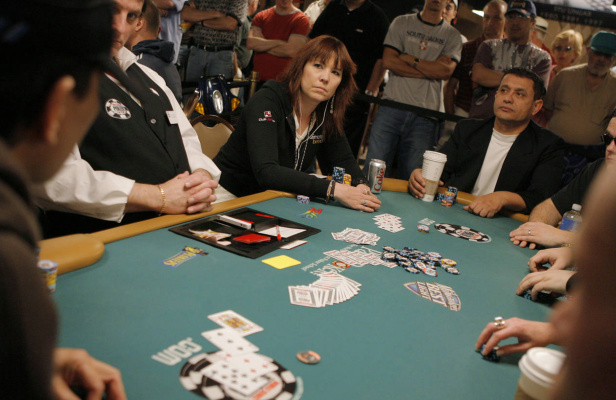Earlier today, Facebook said it had removed hundreds of QAnon groups from its site, and that it’s restricting many more groups, along with hundreds of pages and more than 10,000 Instagram accounts.
As The New York Times observed in its report about the maneuvers, four-year-old QAnon, once a fringe phenomenon, has gone mainstream in recent months despite a wide range of patently outlandish conspiracy theories, including that the world is run by pedophiles trying to damage Donald Trump and that 5G cellular networks are spreading the coronavirus.
How is this happening exactly? Because we happened to be talking this week with the famed former professional poker player turned best-selling author Annie Duke — an academic who now teaches about decision theory, including in her upcoming book “How to Decide: Simple Tools for Making Better Choices” — we asked for her thoughts about whether and why more people than ever have grown susceptible to conspiracy theories.
She had some interesting things to say that we thought worth sharing. Stay tuned for a longer piece from our conversation about her new book and how it can help both founders and investors.
Our brains don’t like randomness. We as human beings are always trying to figure out this cause and effect that’s just kind of random, yet our brains don’t like; we try to connect dots and create causality where it doesn’t exist.
Belief in conspiracy theories isn’t correlated to intelligence. It’s kind of a different thing that’s going on with how comfortable are you with saying, ‘Shit happens. Sometimes life is random and there’s a lot of luck involved and what are you going to do?’ versus [people who] really want things to make sense and to [maintain] the illusion of control over outcomes.
If you say, ‘These random things can happen like COVID and people are dying and you’re now stuck in your home,’ it’s hard to think about that as luck expelling itself all over you because that has implications [regarding how much control] you have over your destiny. We’re very deterministic in how we think . . . so we’re always connecting things together to make it feel like decisions and outcomes and things are much more deterministic than they are.
We’re also natural pattern recognizers, even where patterns don’t exist. It’s so we can partly figure out that, ‘When I went to this part of the plains, there were a lot of lions, [so for safety’s sake I shouldn’t go back],’ and so we can recognize faces. It’s [hard] to understand that the world is not as you see it and that we impose things on the world all the time. [Editor’s note: here, Duke points to this visual illusion (below) of two side-by-side cubes that look to be in motion but are not.]
One of the most powerful motion illusions I’ve seen: The cubes appear to be rotating in opposite directions – but they’re not actually moving at all… 😮
Credit: @jagarikin pic.twitter.com/RgUFskZbZU
— Steve Stewart-Williams (@SteveStuWill) August 15, 2020
We shouldn’t have so much confidence that we know the truth, but we really believe that the cubes are spinning. So [one solution is] don’t have so much confidence that we know the truth, and know that you’re imposing your reality on the world, as opposed to reality imposing itself on you.
Conspiracy theories are not new, in any case, they’ve been going on a long time. The bigger issue now is how easily they are amplified.
One of the heuristics we have to determine whether something is true or not is processing fluency, meaning how easy is it for us to process a message. If we hear something over and over again, it increases its truthiness, in the words of Stephen Colbert. If you add a picture — so I say giraffes are the only animal that can’t jump, and I include a picture of a giraffe — that increases this truthiness.
You can see where that interacts with social media. With theories plus repetition, it’s harder to figure out fact from fiction.
Again, we’ll have more with Duke soon, including why you’re almost certainly running your meetings the wrong way, and why we dig into losses without exploring enough why things go the right way when they do.

